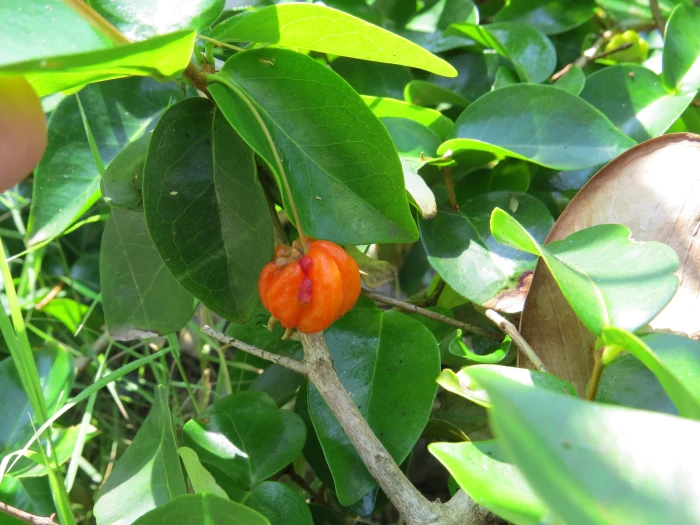Suriname Cherry
(Eugenia uniflora)
Suriname Cherry (Eugenia uniflora)
/
/

Victor Farjalla Pontes
CC BY 4.0























Estimated Native Range
Climate Requirements
| • Precipitation | 51" - 61" |
| • High Temp. | 79°F - 91°F |
| • Low Temp. | 45°F - 64°F |
Summary
The Suriname cherry is valued for its ornamental qualities, including its showy foliage and fruits, as well as for its edible cherries, which are used in jellies, liqueurs, and fresh eating. It is suitable for hedges, screens, and as a specimen plant in tropical and subtropical gardens. This species prefers full sun to part shade, well-drained soils, and regular watering, although it is somewhat drought-tolerant once established. It can be propagated by seeds or cuttings. Gardeners should be aware that Eugenia uniflora can become invasive outside its native range and may require management to prevent unwanted spread.CC BY-SA 4.0
Plant Description
- Plant Type: Shrub, Tree
- Height: 15-25 feet
- Width: 10-15 feet
- Growth Rate: Moderate
- Flower Color: White
- Flowering Season: Spring, Summer
- Leaf Retention: Evergreen
Growth Requirements
- Sun: Full Sun, Part Shade
- Water: Medium
- Drainage: Medium
Common Uses
Bird Garden, Edible*Disclaimer: Easyscape's listed plant edibility is for informational use. Always verify the safety and proper identification of any plant before consumption., Hedges, Low Maintenance, Potted Plant
Natural Habitat
Tropical Atlantic Forest and coastal regions of eastern South America
Other Names
Common Names: Brazilian Cherry , Brazil-Cherry , Cayenne cherry , Cayennekirsche , Cereza De Cayena , Florida Cherry , Barbados Cherry , Pitanga
Scientific Names: Eugenia uniflora , Eugenia arechavaletae , Eugenia costata , Eugenia dasyblasta , Eugenia decidua , Eugenia indica , Eugenia lacustris , Eugenia michelii , Eugenia microphylla , Eugenia myrtifolia
GBIF Accepted Name: Eugenia uniflora